
Working for our water future
Knowledge to strengthen Saskatchewan's water assets
Increased flooding, drought, and upstream use continue to put Saskatchewan’s freshwater resources at risk. Water needs for irrigation, industry, municipalities, recreation, and nature are increasing, along with impacts of runoff from rural and urban development, much of it upstream in the sources of the Saskatchewan River.
Saskatchewan’s economy is water-dependent and subject to widely-varying water availability. We need intelligence on our waters to predict and plan for our farmers, food processors, marketers, hydroelectricity managers, municipalities, and suppliers to our industries.
Research at the University of Saskatchewan is helping the people of Saskatchewan prepare for a water-secure future.
Click here to download this document in PDF format.

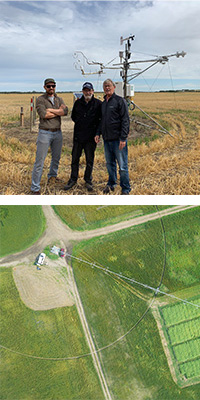
Water wealth & irrigation
Irrigation is critical to the future of food production in the province.
The Lake Diefenbaker irrigation project is a proposed 10-year project investing $4 billion into the rehabilitation and expansion of around 500,000 acres of irrigated agriculture.
Researchers from USask are modelling future water supply and use scenarios for the entire Saskatchewan River Basin, studying economic and societal implications, and researching the water use efficiency of different crops to show the yield increases that can be expected with irrigation.
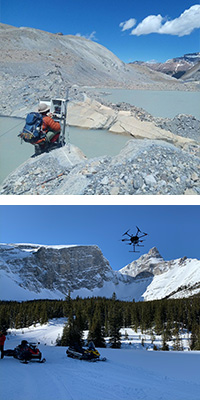
Drought proofing
Saskatchewan's municipalities, irrigated farms, utilities and industries rely on surface water runoff that comes from the snowpacks and glaciers of the Canadian Rockies. Understanding how mountain snow, ice and water behaves is key to predicting the availability of downstream flow in the Saskatchewan River system and the likelihood of flooding or low flows in the rivers.
Researchers from USask are studying these headwaters using the latest technology and developing the most advanced forecasting and modelling techniques. These advances can help everyone in province from producers to water managers prepare for future water supplies and extremes.
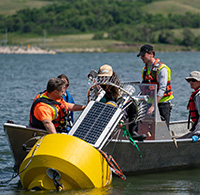
Drinking water quality
Buffalo Pound Lake provides drinking water to residents of the cities of Regina and Moose Jaw, about 25% of the province's population.
Researchers have installed state-of-the-art equipment and continue to develop models to provide early warning of conditions likely to lead to harmful algal blooms, or warn of major changes in lake chemistry that could affect drinking water treatment.
Results will benefit the local water utility and water users, and aid in the management of other bloom-affected waters and surface water supplies. Researchers are working closely with plant managers and the Saskatchewan Water Security Agency to ensure that research outcomes align with local management and policies.
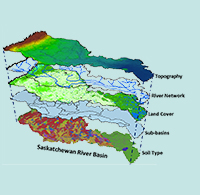
Risk reduction
USask has developed the world’s most sophisticated hydrological and water management models. These models predict snow and glaciers, reservoir management, soil moisture, sloughs, groundwater, irrigation, streamflow and river discharge, and have been deployed and tested on the Saskatchewan River Basin to predict future water supply and use.
The models have also been configured to forecast water supply and flooding operationally and are being used by the Saskatchewan Water Security Agency to assist in its water supply prediction and flood forecasting efforts.
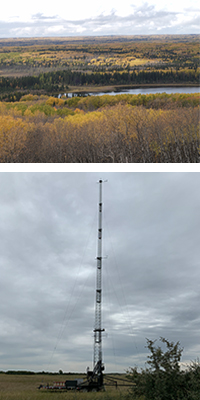
Healthy ecosystems
USask operates the Boreal Ecosystem Research and Monitoring Sites (BERMS), located in the southern edge of the boreal plains ecosystem of the province. Three BERMS sites cover common vegetation types to the Boreal Plains: Fen, Old Jack Pine, and Old Black Spruce. The goal of the BERMS program is to better understand how the climate, hydrology, and vegetation interact.
The Boreal Forest makes up over half of the province's landscape, supports a diverse ecosystem, promotes tourism, recreation and industry, and is the home to more than 50 Indigenous communities.
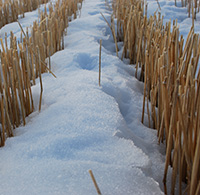
Improving productivity
Researchers working near Clavet at the Livestock and Forage Centre of Excellence (LFCE) – where land use is a mix of livestock forage operations and annual oilseed, cereal and pulse crops – operate an intensive hydrometeorological monitoring program. Environmental monitoring includes a network of ground water well observation, soil moisture observations, and water quality monitoring in a prairie pothole landscape.
Winter experiments have shown how crop water use can be managed and improved by trapping blowing snow in tall stubble and reducing evaporation from soil. In recent drought years, trapped snow provided half of all crop water, and could increase crop yields by up to 30% in the future.
Global Water Futures Observatories
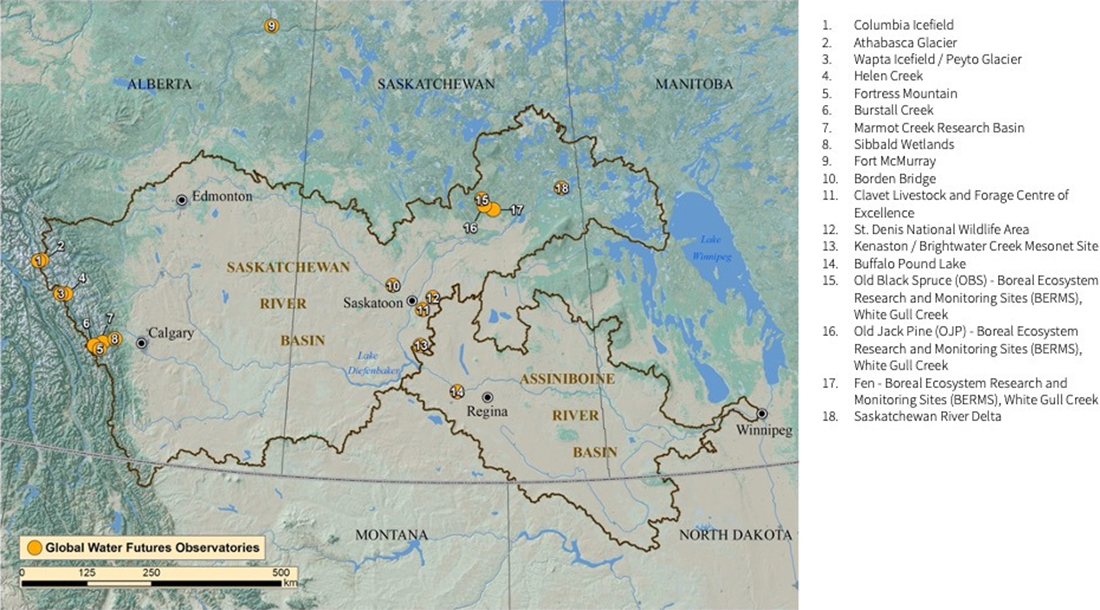
Water observation sites in the Saskatchewan River Basin headwaters are helping us to understand and predict the changing behaviour of Saskatchewan River system, while those in the province help us understand and predict the near and longer-term future of Saskatchewan crops, pastures, ponds, lakes, rivers and boreal forest.
Eighteen water observation sites provide a constant supply of data to support development of agricultural water use models, design of new cropping and cultivation approaches for water management, irrigation efficiency, drinking water quality, river water supply and advanced techniques to predict and manage the effects of extreme weather events.
These information sources and management tools equip Saskatchewan with sophisticated water intelligence that provides a competitive advantage and drives investment towards our water-based economy, helping us manage our water future.



